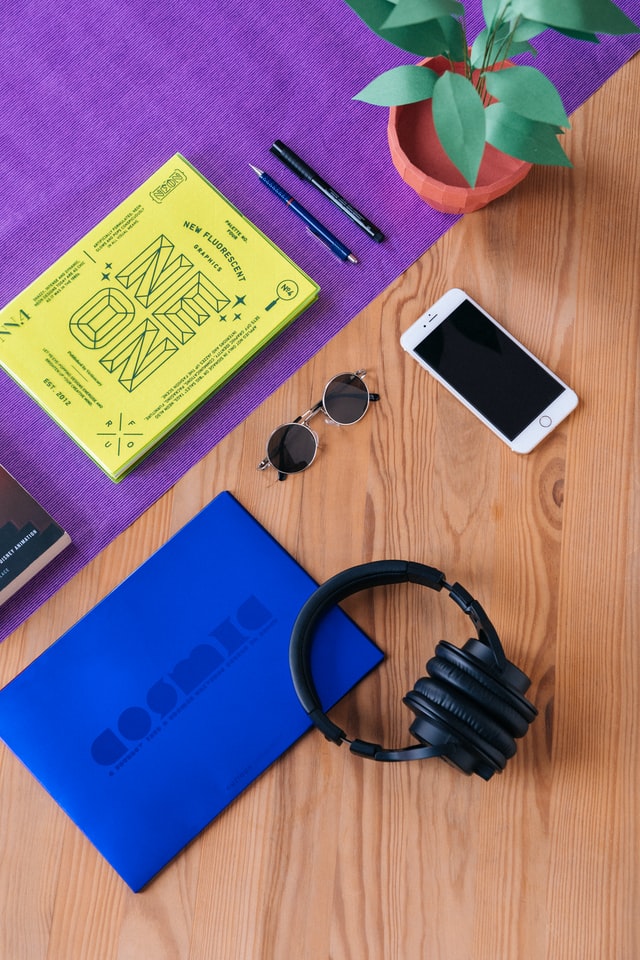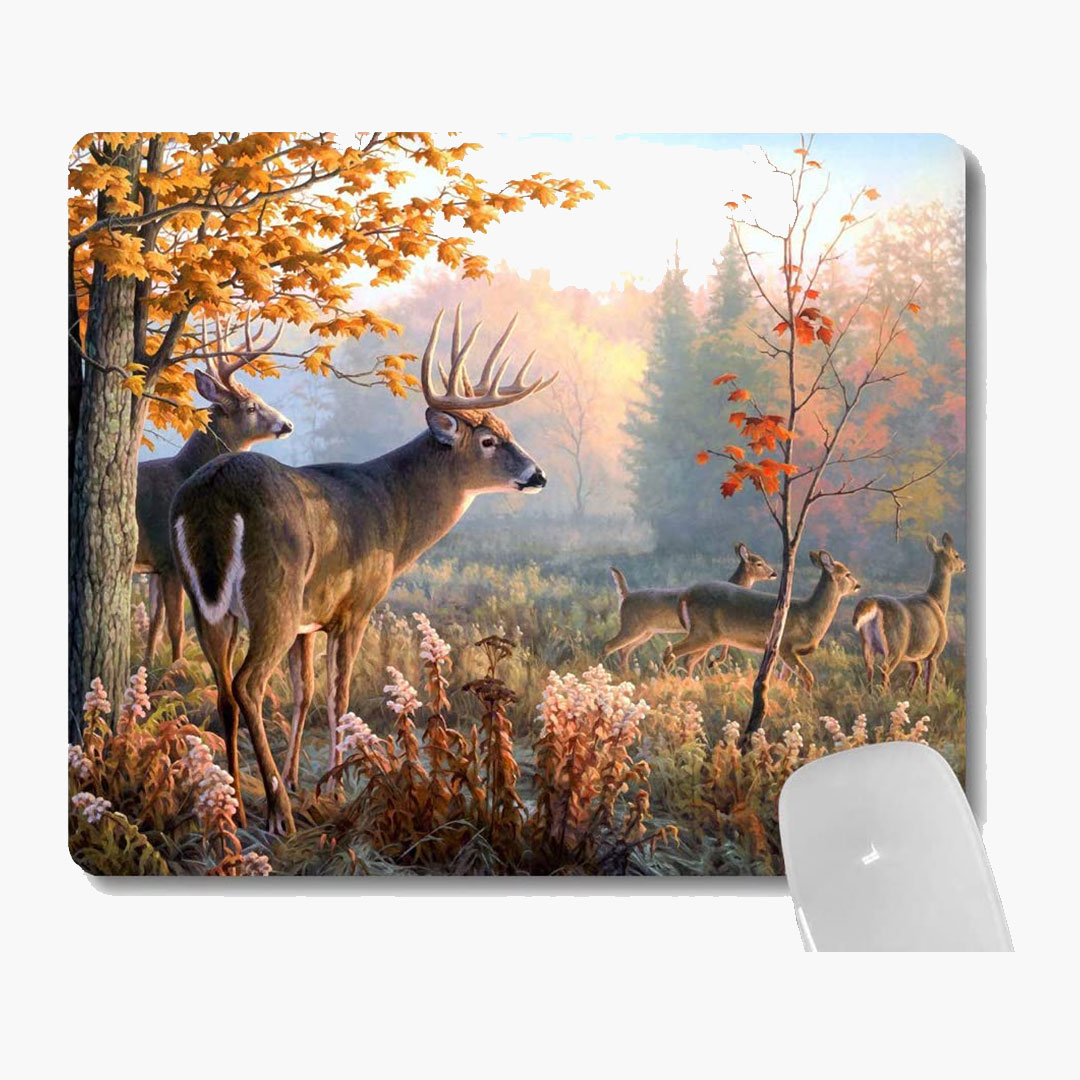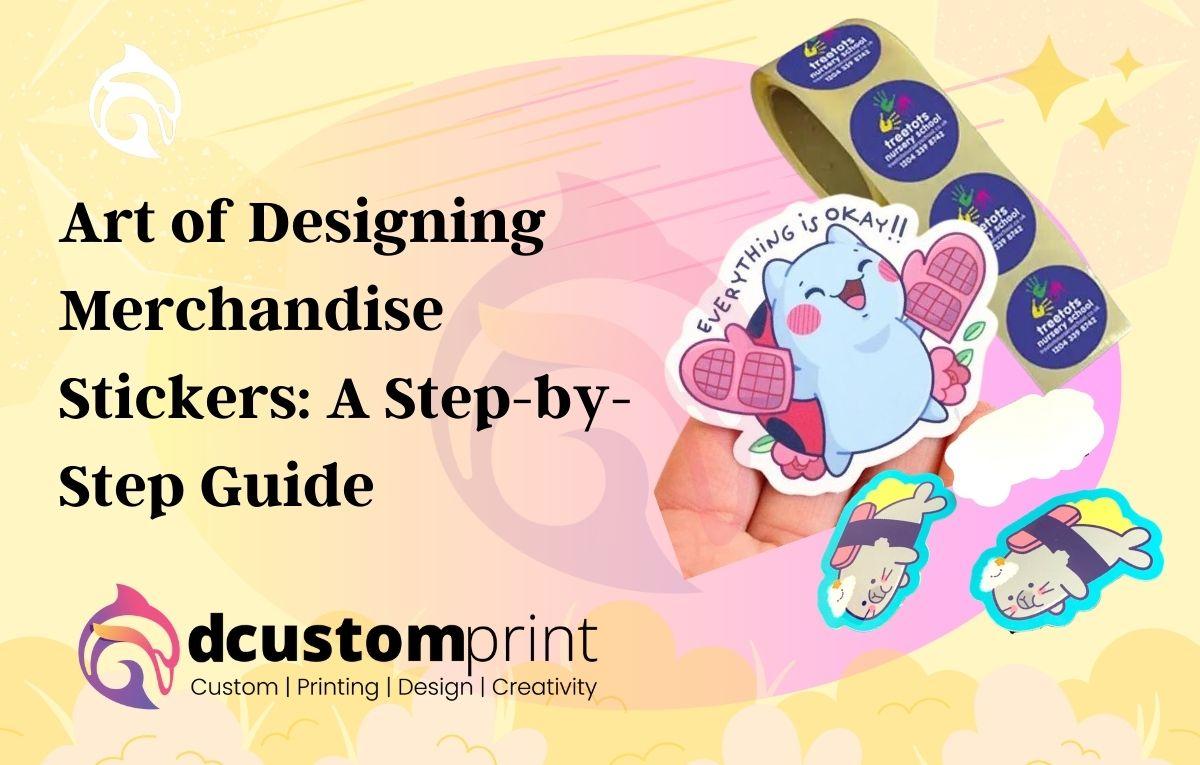Marketing & Advertising
Art of Designing Merchandise Stickers: A Step-by-Step Guide
Merchandise stickers printing, specifically sticker printing, is a popular method of creating custom stickers for personal or promotional use.
Stickers are versatile and can be applied to various surfaces, such as laptops, water bottles, car bumpers, notebooks, etc. They offer a fun and creative way to express yourself or promote your brand.
The Rise of Merchandise Sticker Printing
Merchandise stickers printing has gained significant popularity as a means of creating custom products for personal and promotional purposes.
Among the various techniques available, sticker printing is widely used for producing custom stickers.
Whether you want to add a personal touch to your belongings or promote your brand, sticker printing offers a versatile and cost-effective solution.
This guide will provide an overview of sticker printing, including its process, materials, and potential applications.
Merchandise stickers printing process:
The first step in sticker printing is designing the artwork. You can use graphic design software like Adobe Photoshop or Illustrator to create your design. Alternatively, you can hire a professional designer or use online platforms that offer pre-made templates.
Preparing Your Design for Printing
Once the design is finalized, it needs to be prepared for printing. Convert your design to a high-resolution file format (PDF, TIFF, or EPS) to ensure quality printing.
Ensure the plan meets the printer’s specifications, including the desired dimensions and coloured (usually CMYK for print).
There are various printing methods available for stickers, each with its advantages and costs:
Digital Printing
This method suits small to medium-sized print runs and offers high-quality results with vibrant colours and intricate details.
Digital printing is cost-effective for short production runs because it doesn’t require setup fees or printing plates.
Offset Printing
Offset printing is ideal for large-scale sticker production. It involves transferring the design onto a printing plate, which is then used to transfer the image onto the sticker material.
Offset printing offers excellent colour accuracy and is cost-effective for large quantities.
Screen printing is commonly used for bulk orders of stickers. It involves pushing ink through a fine mesh screen onto the sticker material.
Screen printing is durable and provides vibrant colours, making it suitable for outdoor or long-term use.
Material Selection
Stickers can be printed on various materials, depending on your requirements. Standard options include vinyl, paper, and clear polyester.
Vinyl stickers are durable, weather-resistant, and often used for outdoor applications. Paper stickers are more affordable and suitable for indoor use. Clear polyester stickers are transparent, providing a unique look.
Enhancing Sticker Appeal
The stickers may undergo an additional finishing process after printing. It can include laminating (to add a protective layer), die-cutting (to cut the stickers into custom shapes), or a glossy or matte finish. These enhancements enhance the appearance and durability of the stickers.
Ensuring Perfection
A quality control check is performed before the final product is shipped to ensure the stickers meet the desired specifications.
It includes checking for colour accuracy, print clarity, and physical defects.
Spreading the Sticker Joy: Efficient Distribution Strategies for Maximum Impact
Once the stickers pass quality control, they are ready for distribution. They can package individually or in sets, depending on your needs.
Stickers can be sold directly, given away as promotional items, or used for personal purposes.
Power of Sticker Printing for Personal and Brand Promotion
Sticker printing offers endless personal expression, marketing campaigns, and brand promotion possibilities.
Whether creating stickers for fun, artistic endeavours, or business purposes, this merchandise stickers printing method allows you to bring your designs to life and share them with others.
Key Considerations for High-Quality Results
You can follow several best practices to ensure high-quality results regarding merchandise sticker printing. Here are some key considerations:
Design Excellence
Start with a well-designed sticker that captures attention and effectively communicates your brand or message. Use professional graphic design software or hire a designer if needed.
Pixel-Perfect Printing
Ensure that your sticker design has a high resolution (at least 300 dpi) to avoid pixelation when printed. Save the file in a suitable format such as vector (e.g., EPS, AI, or PDF) or high-quality raster (e.g., TIFF or PNG).
Material Matters
Choose the appropriate sticker material based on your requirements. Vinyl stickers are commonly used as they are durable, weather-resistant, and can apply to various surfaces.
Other options include paper, precise, or holographic stickers, each with unique characteristics.
Printing Perfection
Select a method that suits your budget and desired quality. Standard options include digital printing for small runs or intricate designs and offset printing for large quantities. Make sure the printing service provider has experience with sticker printing.
Vibrant and True
Ensure colour accuracy using your design’s Pantone (PMS) or CMYK colour codes. Request colour proofs or samples from the printing service to verify the accuracy before final production.
Cutting Edge Creativity
Consider whether you want standard-shaped stickers or custom die-cut shapes that match your design. Die-cut stickers can be more eye-catching and visually appealing.
Finishing Options for Merchandise Stickers Printing
Decide if you want any additional finishes or coatings to enhance the appearance and durability of the stickers.
Options include glossy or matte finishes, UV coating for extra protection against fading, or laminating for added durability.
Effective Quality Control in Merchandise Sticker Printing
Perform thorough quality checks before approving the final production. Inspect the colour, print clarity, and overall sticker quality to ensure they meet your expectations.
Packaging and Distribution
Determine how you will package and distribute the stickers. Protect them from damage during transit, and consider including branding elements or promotional materials with each package.
Partnering with Perfection
Choose a reliable, experienced printing service provider to ensure smooth processes and high-quality results.
Research customer reviews and asks for samples or references before making a decision.
By following these best practices, you can maximise your sticker merchandise’s visual impact and durability, creating a positive impression among your target audience.
Conclusion
In conclusion, merchandise stickers printing is a valuable and effective marketing tool for businesses. Stickers can promote brand awareness, enhance product packaging, and create a memorable impression on customers. By incorporating creative and visually appealing designs, companies can attract attention, generate interest, and increase brand visibility.
Merchandise stickers offer several advantages. Firstly, they are a cost-effective marketing solution for small businesses with limited budgets.
Secondly, stickers are versatile and can apply to various surfaces, such as product packaging, promotional materials, laptops, cars, etc.
This flexibility allows businesses to reach a wider audience and expand their brand presence across different platforms.
Furthermore, merchandise stickers serve as a form of word-of-mouth advertising. Customers who receive stickers with their purchases are likelier to share them with others, extending the brand’s reach.
Businesses can incorporate their logo, tagline, or other visual elements representing their brand values and personality.
This customisation helps create a consistent and cohesive brand image, reinforcing brand recall and fostering brand loyalty.
Lastly, merchandise stickers offer a tangible and interactive experience for customers.
They provide a fun and engaging way for customers to express their support for a brand, as they can stick the stickers on their personal belongings or share them with friends and family.



